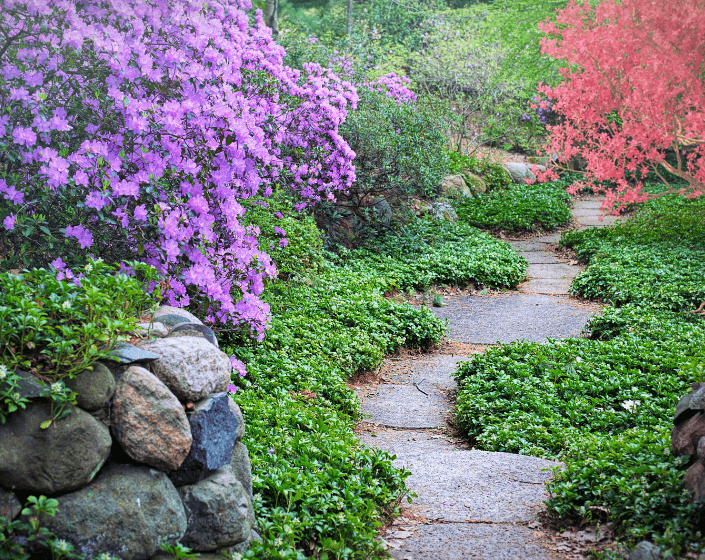
The Psychology of Garden Paths: Designing for Peace and Function
Discover the subtle art of garden path design. Learn how curves, choice of materials, and proper lighting can transform your Florida home’s outdoor space.
Have you ever considered the impact a curving garden path can have on your home’s aesthetic and your personal well-being?
A thoughtfully designed garden path does more than guide you from point A to B; it invites peace into your everyday life. For homeowners in Florida, where the climate allows for enjoying outdoor spaces almost year-round, the design of your garden path can significantly enhance the beauty and utility of your landscape.
The Role of Curves: Inviting Serenity
You might find yourself drawn to meandering paths, and there’s a reason for this. Curved paths mimic nature’s natural randomness, promoting your sense of discovery and relaxation as you walk through your garden. A path’s gentle curves can turn a simple trip to a mailbox into a little respite from the day’s stresses.
Materials Matter: Choosing the Right Foundation
For path construction, consider using natural materials like flagstone or river rocks that blend harmoniously with the landscape.
When selecting materials for your paths, keep in mind both function and aesthetics. Choosing non-slip materials can prevent accidents in Florida’s rainy summers. Gravel, while a popular path choice, tends to scatter; however, stabilized gravel or stepping stones with ground cover plants like Creeping Thyme can keep the pathway intact and add a splash of greenery.
Width and Accessibility: Planning for Use
Think about the intended use of your garden path. Should it accommodate two or more people walking side by side? Planning the width of your path ensures it meets your functional needs while also considering accessibility. A width of at least 36 inches allows for comfortable passage and can make your garden more welcoming to guests with different mobility needs.
Borders and Edging: Defining Your Path
Defining the edges of your garden path can enhance both its form and function. Borders serve as a visual cue that guides the eyes and feet, maintaining the path’s shape and directing traffic efficiently. Florida-native plants like Muhly Grass or Blue Sage not only look beautiful as edging but also thrive in local conditions, requiring less water and maintenance than some other options.
Lighting: Illuminating Your Way
Proper lighting is important for evening enjoyment and safety on your garden path. Solar-powered lights are an excellent option for Florida homeowners, harnessing the plentiful sunlight and reducing energy costs. Strategically placed, they can highlight certain plants or architectural features and ensure the path is navigable after sunset.
Conclusion: Your Path to Peace
Incorporating these elements into the design of your garden path not only ups its functionality but also transforms it into a source of peace. For you, the homeowner, every element, from the curve of the path to the choice of edging, can help your landscape feel like a sanctuary.